Sony Xperia TX Review
From an ergonomic point of view, the flagship model of the Sony Xperia S had one drawback, which everyone felt like: the touch-sensitive interface control buttons of the operating system were located on the body of the smartphone, so that the finger didn’t hit them the first time. Of course, with all the other undeniable merits, it was possible to close my eyes to this shortcoming - which I personally did with success. In the Sony Xperia acro S, the bottom of the smartphone has already been changed and the keys react much better.

')

But in the Sony Xperia TX, which inherited the external features of the rc line, Sony solved the problem of reacting the touch keys radically, they simply do not exist on the body of the smartphone. The function keys for managing the Android ICS operating system are located in the Android ICS interface itself. On the one hand, it makes the active display smaller. However, with a diagonal of the display 4.55 inches, the useful area of the display remains abundant. In addition, the use of interface function buttons is much more convenient.
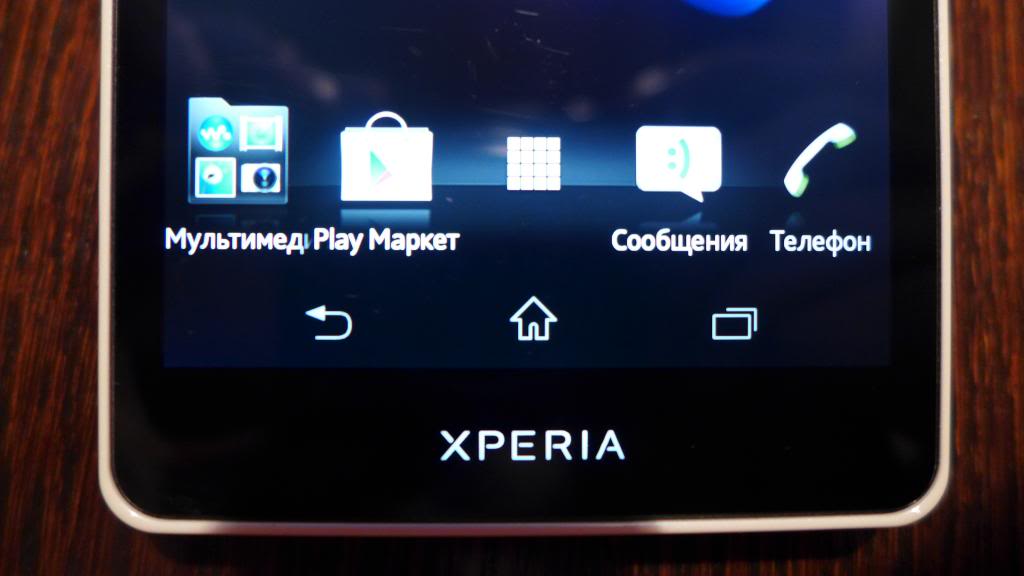
Immediately it should be noted that having solved the problem with frontal touch-sensitive control buttons, Sony ergonomist engineers, in my opinion, screwed up with physical buttons located on the side faces of the smartphone. And the camera button and, especially, the on / off button are too small, it’s not easy to find them, and it’s inconvenient to use, and the on button is generally on the left side, so it’s quite uncomfortable to reach for it. Also in my opinion the micro-USB connector is not very conveniently located, - above the volume rocker.

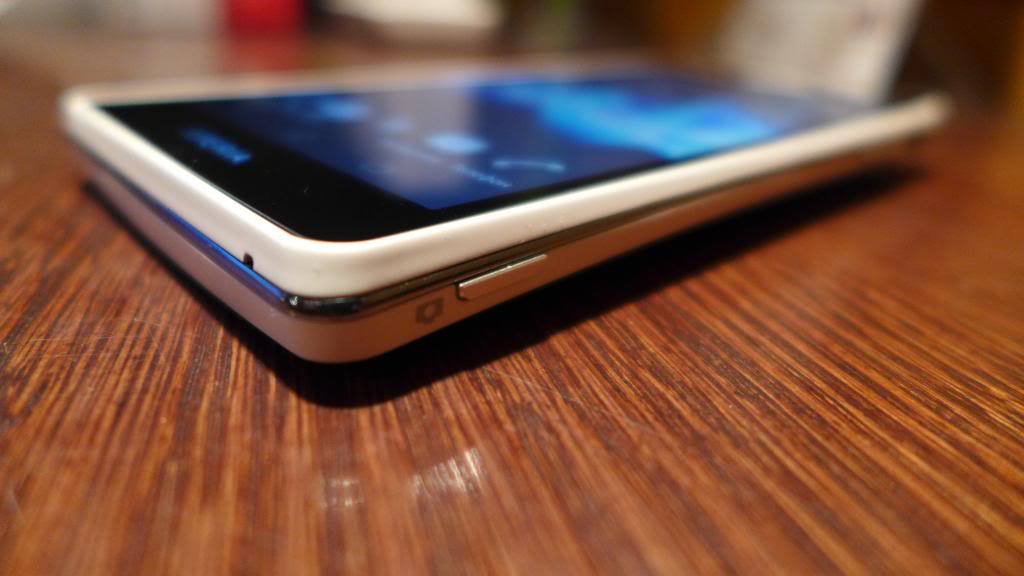
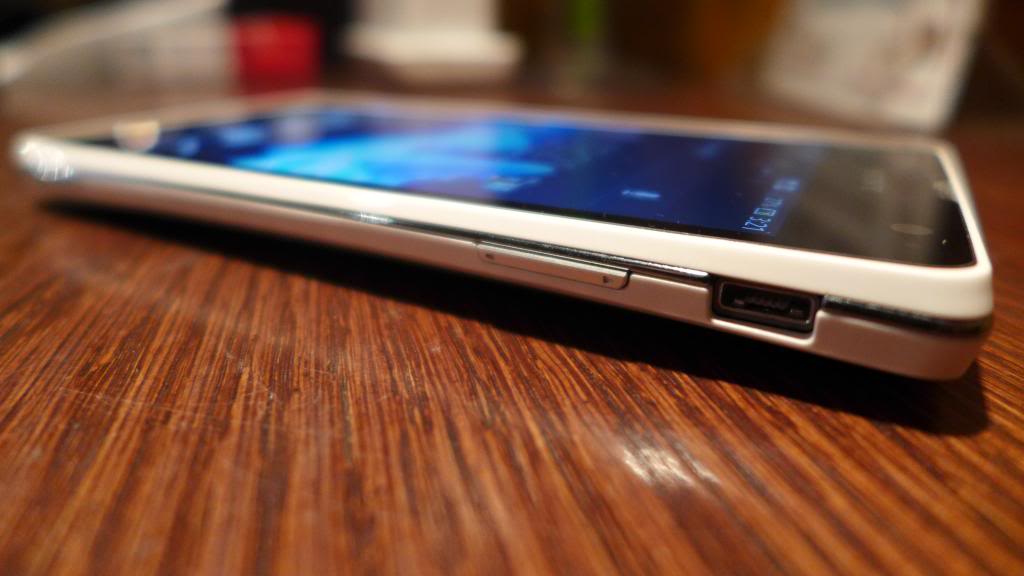
The situation somehow rescues the plastic from which the back cover of the smartphone is made and its curved shape, thanks to which the device, despite its almost airy subtlety and lightness, is quite confident in the hand. But the curved shape of the back cover, on the one hand contributing to the comfortable position of the smartphone in hand, if you put the device on the table, turns into a minus: because of the projection of the camera lens in the upper part of the back cover, the smartphone does not lie flat on the table surface, but sways. This is not very convenient, because we often type a message on the keyboard without holding the smartphone in hand, when it is on the table.
In general, without ergonomic shortcomings and in this model has not done. It is strange, very strange that Sony never succeeds in finding an ideal and unique form for its smartphones, as Apple, Nokia, Samsung and LG managed to do. Moreover, both in the Arc lineup and in the Xperia lineup, there are obvious ergonomic finds, but for some reason it does not work to bring them together in one smartphone.
However, all this, of course, little things, because the display, which occupies the entire frontal surface of the Xperia TX, deserves nothing but praise. This is not the first smartphone model in which a HD (1280x720) TFT Super LCD display with Goriilla Glass coating is installed. These displays not only have excellent clarity, calm, slightly dull, pastel colors, but also a unique tactile quality: when you touch, it seems to you that you are not touching the glass, but some strange, slightly soft and even velvety surface. In short, the display is great. Viewing angles, brightness even in the sun - all these qualities of the Xperia TX display are absolutely on par with the best modern products in the industry.
As for the hardware platform on which the smartphone runs, it represents the configuration of a newer hardware with respect to all the same Xperia S. The processor in the Xperia S is used by Qualcomm MSM8260, and in the Xperia TX - by Qualcomm MSM8260. The graphics card in the Xperia S - Adreno 220, and in the Xperia TX - Adreno 225. The same 1 GB of RAM, but the built-in flash memory - less - 16 GB, which, however, is not terrible in the presence of a slot for removable micro -SD cards.
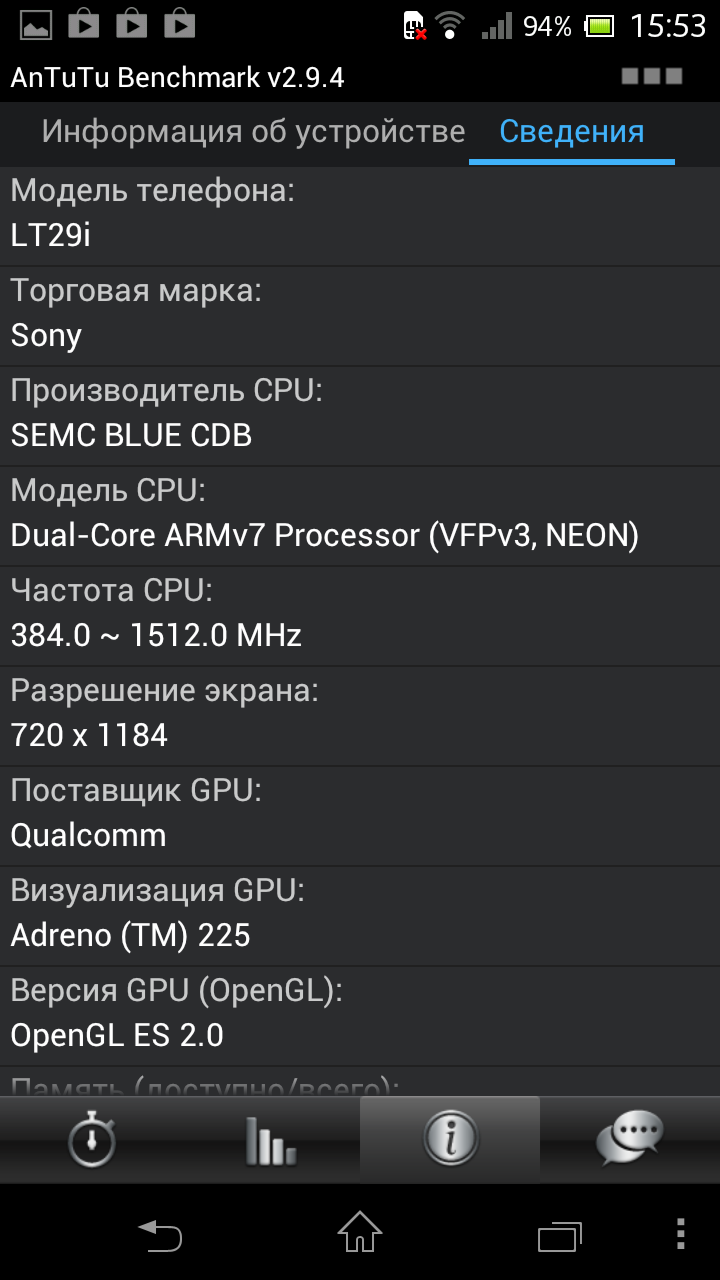


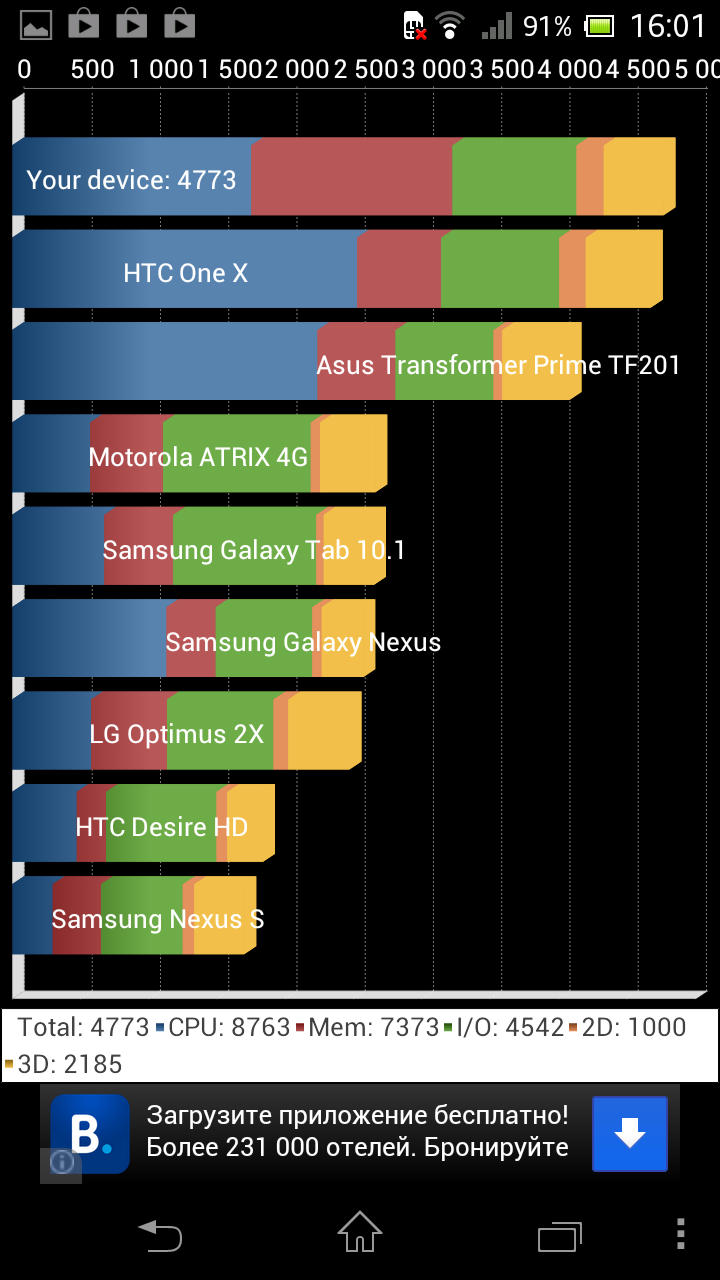
Optimization of the operating system Android 4.0 with a customized Sony shell (in my opinion, the best on the market - on the keyboard, animation, embedded proprietary applications: the Walkman player, in particular) practically does not differ from the optimization that is in Xperia S. Anyway , the battery charge at 1750 mAh is enough for the same 10 hours of battery life with an average load.
The camera module in TX is formally different from what is installed in the Xperia S: in the “esque” it is 12.1 megapixels, and in the TX by 13 megapixels. However, as you know, the quality of a photo or video does not hold on only megapixels. The fundamental qualitative difference between the Xperia S and Xperia TX images was not successful.
Xperia tx
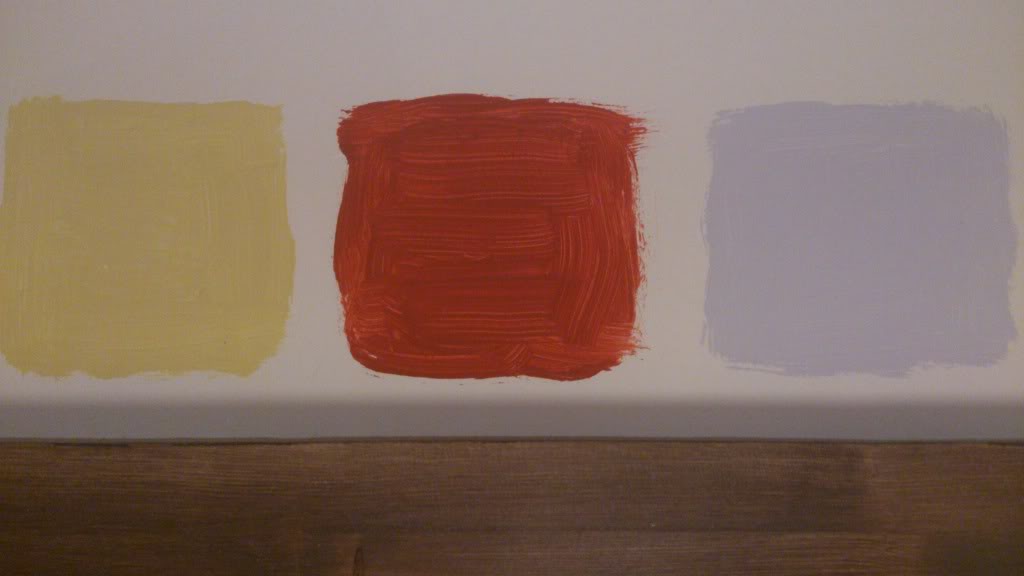
Xperia s
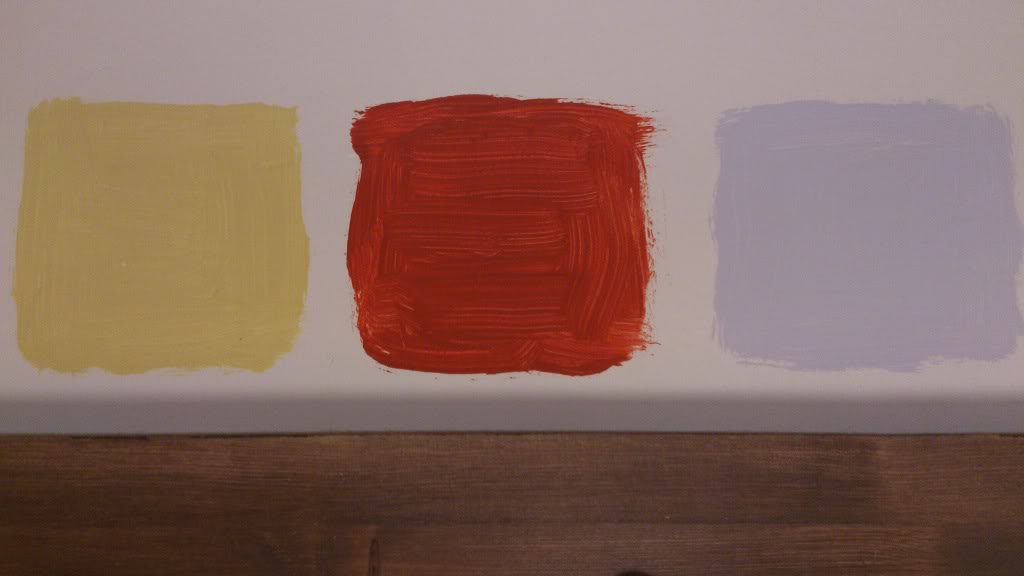



To summarize, I can say that Sony has not demonstrated anything fundamentally new in TX. Just another very high-quality smartphone, probably included in the "top ten" best android phones on the market. At the same time, I personally would like to see some kind of revolution from Sony, both in ergonomics and technology.

')

But in the Sony Xperia TX, which inherited the external features of the rc line, Sony solved the problem of reacting the touch keys radically, they simply do not exist on the body of the smartphone. The function keys for managing the Android ICS operating system are located in the Android ICS interface itself. On the one hand, it makes the active display smaller. However, with a diagonal of the display 4.55 inches, the useful area of the display remains abundant. In addition, the use of interface function buttons is much more convenient.

Immediately it should be noted that having solved the problem with frontal touch-sensitive control buttons, Sony ergonomist engineers, in my opinion, screwed up with physical buttons located on the side faces of the smartphone. And the camera button and, especially, the on / off button are too small, it’s not easy to find them, and it’s inconvenient to use, and the on button is generally on the left side, so it’s quite uncomfortable to reach for it. Also in my opinion the micro-USB connector is not very conveniently located, - above the volume rocker.



The situation somehow rescues the plastic from which the back cover of the smartphone is made and its curved shape, thanks to which the device, despite its almost airy subtlety and lightness, is quite confident in the hand. But the curved shape of the back cover, on the one hand contributing to the comfortable position of the smartphone in hand, if you put the device on the table, turns into a minus: because of the projection of the camera lens in the upper part of the back cover, the smartphone does not lie flat on the table surface, but sways. This is not very convenient, because we often type a message on the keyboard without holding the smartphone in hand, when it is on the table.
In general, without ergonomic shortcomings and in this model has not done. It is strange, very strange that Sony never succeeds in finding an ideal and unique form for its smartphones, as Apple, Nokia, Samsung and LG managed to do. Moreover, both in the Arc lineup and in the Xperia lineup, there are obvious ergonomic finds, but for some reason it does not work to bring them together in one smartphone.
However, all this, of course, little things, because the display, which occupies the entire frontal surface of the Xperia TX, deserves nothing but praise. This is not the first smartphone model in which a HD (1280x720) TFT Super LCD display with Goriilla Glass coating is installed. These displays not only have excellent clarity, calm, slightly dull, pastel colors, but also a unique tactile quality: when you touch, it seems to you that you are not touching the glass, but some strange, slightly soft and even velvety surface. In short, the display is great. Viewing angles, brightness even in the sun - all these qualities of the Xperia TX display are absolutely on par with the best modern products in the industry.
As for the hardware platform on which the smartphone runs, it represents the configuration of a newer hardware with respect to all the same Xperia S. The processor in the Xperia S is used by Qualcomm MSM8260, and in the Xperia TX - by Qualcomm MSM8260. The graphics card in the Xperia S - Adreno 220, and in the Xperia TX - Adreno 225. The same 1 GB of RAM, but the built-in flash memory - less - 16 GB, which, however, is not terrible in the presence of a slot for removable micro -SD cards.




Optimization of the operating system Android 4.0 with a customized Sony shell (in my opinion, the best on the market - on the keyboard, animation, embedded proprietary applications: the Walkman player, in particular) practically does not differ from the optimization that is in Xperia S. Anyway , the battery charge at 1750 mAh is enough for the same 10 hours of battery life with an average load.
The camera module in TX is formally different from what is installed in the Xperia S: in the “esque” it is 12.1 megapixels, and in the TX by 13 megapixels. However, as you know, the quality of a photo or video does not hold on only megapixels. The fundamental qualitative difference between the Xperia S and Xperia TX images was not successful.
Xperia tx

Xperia s




To summarize, I can say that Sony has not demonstrated anything fundamentally new in TX. Just another very high-quality smartphone, probably included in the "top ten" best android phones on the market. At the same time, I personally would like to see some kind of revolution from Sony, both in ergonomics and technology.
Source: https://habr.com/ru/post/159089/
All Articles